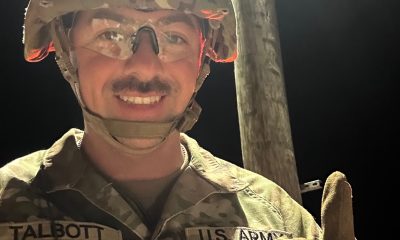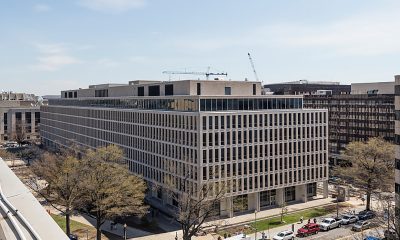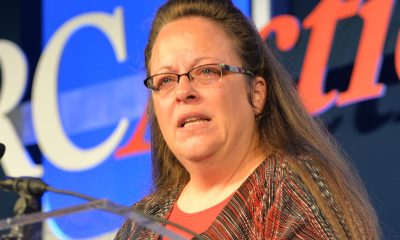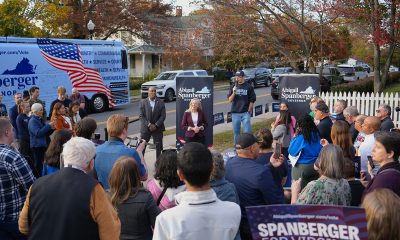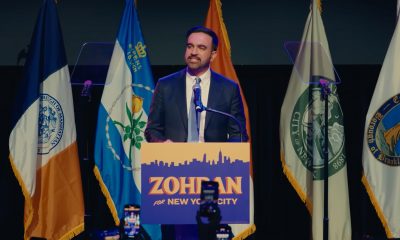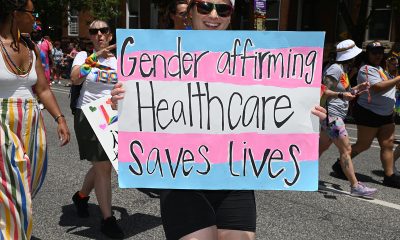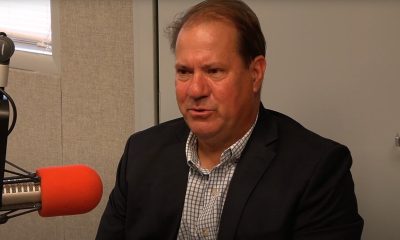News
Support for marriage equality in Utah at record high
41 percent of residents supported gay nuptials prior to stay
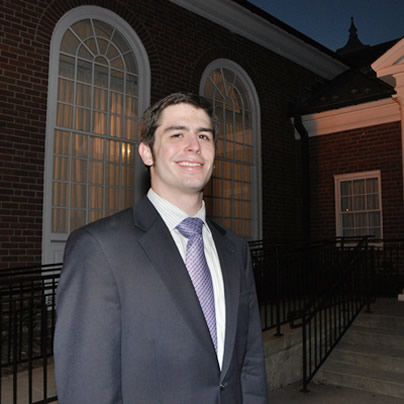
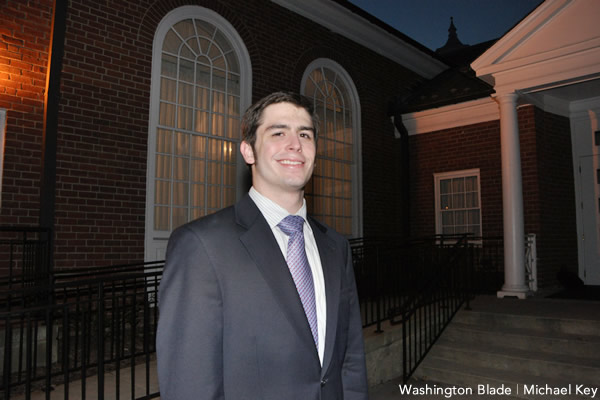
David Baker commissioned a poll with Google revealing support for marriage equality in Utah was at an all-time high. (Washington Blade file photo by Michael Key)
A recent consumer survey conducted in Utah reveals that support for same-sex marriage in the state was at an all-time high last week just before the Supreme Court halted the weddings with a stay.
The poll, conducted using Google’s digital platform polling system, found that support for same-sex marriage reached 41 percent as of last week. Although the poll shows a majority of Utah voters have yet to embrace marriage equality, the result demonstrates a 13-point increase in support over two years when compared to an earlier poll from Brigham Young University.
David Baker, a Mormon and gay D.C. activist, said he ran the poll in the aftermath of the federal district court ruling in Utah in favor of marriage equality for more updated data on the state’s support for same-sex nuptials.
“I conducted the poll because the latest data out of Utah is almost two years old and it had been almost two weeks since the District court ruling,” Baker said. “I knew that Google’s tool would get me statistically significant results in a few days so I ran the poll as a private citizen.”
The questioning in the survey is based on similar polls that Brigham Young University’s Center for the Study of Elections & Democracy conducted on marriage equality in 2004, 2009, 2010 and 2012. The 2012 poll found that just 28 percent of Utah residents supported marriage equality, 43 percent supported only civil unions and 29 percent wanted no legal recognition for same-sex couples.
The 13-point jump in the more recent survey compared to the most recent BYU poll reveals that new support for marriage equality came entirely from those who previously supported only civil unions. Opposition to marriage equality also grew from 29 percent to 31 percent.
Baker said he thinks the poll demonstrates a shift in opinion among Utah voters to support same-sex marriage following the U.S. Supreme Court’s decision in June against Section 3 of the Defense of Marriage Act.
“A 13-point bump signifies that Utah voters realize the world hasn’t ended with the repeal of DOMA and recognizing same-sex marriages is the right thing to do,” Baker said.
The Washington Blade is unaware of any other recent polling on same-sex marriage in Utah in the aftermath of the district court ruling besides the consumer poll.
Google consumer surveys are deemed accurate by statistics experts. As Baker notes in his blog posting in which he published the poll results, statistics guru Nate Silver ranked them second overall in terms of reliability and lack of bias during the 2012 presidential election.
Scott Barclay, a senior scholar in public policy at the Williams Institute at University of California, Los Angeles, said the new poll is consistent with earlier public opinion estimates on rising support for marriage equality throughout the states.
“Support for marriage equality generally has been consistently rising in the last 20 years, but current research at the Williams Institute finds that the rate of support for marriage equality at both the national level and within almost all states appears to be increasing much more rapidly in the last four years than at any previous point in time,” Barclay said.
A Williams Institute survey, which didn’t include a question on civil unions, found that support in 2012 for same-sex marriage in Utah was at 36 percent —slightly higher than the result from BYU in the same year.
Barclay said there’s good evidence that public opinion surveys that include the option of civil unions alongside marriage equality actually underestimate the level of support in the general population for marriage equality.
Moreover, Barclay said it’s no surprise that increased support for marriage equality in the new poll comes entirely from people who previously supported only civil unions.
“As reflected in the current poll result, existing research shows that support for civil unions has generally declined as marriage equality has emerged as the popularly accepted form of state recognition,” Barclay said. “Individuals who identify as conservative are the most likely to continue to support civil unions.”
The new poll includes increased support from younger people relative to other groups, which, given recent attitudes on marriage equality, could shift the result more in favor of marriage equality. However, Barclay said he was able to achieve the same result by weighting the survey for a more balanced look.
“We used a statistical technique to apply population weights (based on the current information from the Current Population Survey of the Census) to the reported survey and the newly weighted version yielded a very similar result [at 41 percent support for marriage equality],” Barclay said.
The poll shows growing support for marriage equality in Utah just as other polls have revealed increased support for gay nuptials nationwide. A widely cited poll in March 2013 from Washington Post-ABC News found 58 percent of Americans support marriage equality.
Evan Wolfson, president of Freedom to Marry, spoke broadly about the growing support for marriage equality when asked to comment on the significance of the recent Utah survey.
“Support for the freedom to marry is accelerating in Utah, as in the rest of the country — and for the same reason,” Wolfson said. “As people get to know more about gay people’s lives and families, engage in conversations about gay people and why marriage matters, and think about values such as the Golden Rule of treating others as you’d want to be treated, hearts open and minds change.”
It remains to be seen whether the stay on same-sex marriage in Utah will have an impact on support for same-sex marriage in the state.
Baker said he hasn’t yet decided on whether to do another poll.
“I hadn’t planned on one just yet as I don’t think the stay is going to influence opinion,” Baker said. “I might do one that doesn’t have civil unions as an option to see where things stand there.”
District of Columbia
High cost of living shuts essential workers out, threatens D.C.’s economic stability
City residents don’t always reflect those who keep it running
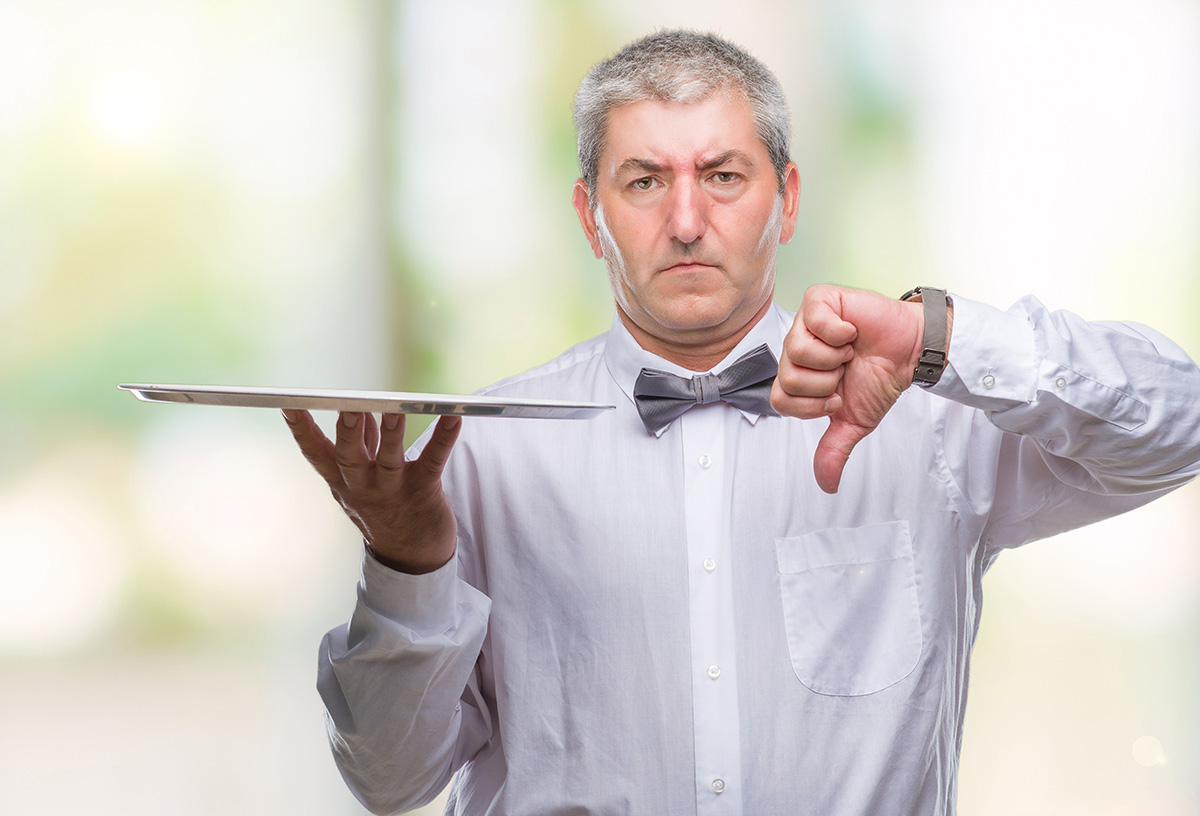
When Nic Kelly finishes her 6 a.m. shift as a manager at PetSmart, she walks to her bartending job at Alamo Drafthouse in Crystal City to serve cocktails, beers, and milkshakes for hundreds of guests.
Kelly, 26, doesn’t work a combined 60-65 hours per week to pocket extra cash –– she does it to barely make her almost $1,700 rent each month.
“I’m constantly working, and some days I work two jobs in the same day,” Kelly said. “But twice now I’ve had to borrow money from my mother just to make sure I pay my full rent.”
Yesim Sayin, D.C. Policy Center executive director, said this is unfortunately how the D.C. area is structured –– to keep essential workers, service employees, and lower-income people out and those with greater economic mobility in.
The DMV area’s high cost of living makes it near-impossible for employees who keep the area running to make a living, Sayin said. In 2022, only 36% of D.C.’s essential workers lived in the city, according to a D.C. Policy Center report. D.C. is also ranked 13th in the world for highest cost of living as of Nov. 7.
But for Sayin, there’s more work for policymakers to get done than simply acknowledging the high cost of living. Take a look at how current policies are impacting residents, and what long-term solutions could help the DMV thrive.
Feeling the high cost of living
D.C. has the highest unemployment rate in the country at 6.0% as of August. Sayin said the city’s high unemployment rate reflects a lack of geographic mobility in its population, meaning those who can’t find jobs can’t afford to look outside of the DMV area.
Though there are job training groups working to close the unemployment gap, securing a job –– let alone two –– rarely guarantees a comfortable lifestyle for essential and service employees.
A single-person household in D.C. with no children must make at least $25.98 an hour to support themselves, according to the Living Wage Calculator. That number jumps to $51.68 an hour for a single adult with one child. Minimum wage in D.C. is $17.95 an hour and $10 an hour for tipped employees.
Whether it’s utilizing free meals at the Alamo to save on groceries or borrowing money to make rent, every week could bring a different sacrifice for Kelly.
While Kelly lives and works a few minutes south of D.C., Sayin said the connectedness of the DMV means you don’t have to travel far to feel the withering effects of the area’s high cost of living.
“People don’t really care what flag adorns their skies,” Sayin said. “They’re looking for good housing, good schools, cheaper cost of living, and ease of transportation.”
For those that stay in the DMV area, those conditions are hard to come by. This can lead to people working multiple jobs or turning to gigs, such as Uber driving or selling on Etsy, to fill income gaps. Sayin said there are short-term benefits to securing these gigs alongside a primary job, such as helping people weather economic storms, avoid going on government assistance or racking up debt.
But she said the long-term implications of relying on gigs or other jobs can harm someone’s professional aspirations.
“You can spend three extra hours on your own profession every work week, or you can spend three hours driving Uber. One gives you cash, but the other gives you perhaps a different path in your professional life,” Sayin said. “And then 20 years from now, you could be making much more with those additional investments in yourself professionally.”
There’s a strong demand for work in D.C., but when the city starts suffering economically, those who live outside the area –– usually essential or remote workers –– will likely find work elsewhere. Sayin said this negatively impacts those employees’ quality of life, giving them less professional tenure and stability.
D.C.’s cost of living also centralizes power in the city, according to Sayin. When lower-wage employees are priced out, the residents who make up the city don’t always reflect the ones who keep it running.
“Ask your Amazon, Uber or FedEx driver where they live. They’re somewhere in Waldorf. They’re not here,” Sayin said.
Working toward an accessible D.C.
Build more. That’s what Sayin said when thinking of ways to solve D.C.’s affordability crisis.
But it’s not just about building more –– it’s about building smartly and utilizing the space of the city more strategically, Sayin said.
While D.C. has constructed lots of new housing over the years, Sayin noted that they were mostly built in a handful of neighborhoods tailored to middle and upper-class people such as The Wharf. Similarly, building trendy small units to house young professionals moving to the city take up prime real estate from struggling families that have much less geographic mobility, she said.
“The affordability problem is that today’s stock is yesterday’s construction,” Sayin said.
Solving these issues includes ushering in a modern perspective on outdated policies. Sayin cited a D.C. policy that places restrictions on childcare centers built on second floors. Since D.C. parents pay the highest rates in the country for childcare at $47,174 annually, she said loosening unnecessary restrictions could help fuel supply and lower costs for families.
Sayin said policymakers need to consider the economic challenges facing residents today, and whether the incentives and tradeoffs of living in D.C. are valuable enough to keep them in the city.
For Kelly, the incentives and tradeoffs of staying in the DMV area aren’t enough. She’s considered moving back in with her mom a few times given how much she has to work just to get by.
Aside from wanting higher compensation for the work she does –– she noted that businesses can’t operate without employees like her –– Kelly also questioned the value of the tradeoff of moving so close to the city.
“There’s no reason why I’m paying $1,700 for a little studio,” Kelly said. “You also have to pay for parking, utilities aren’t included and a lot of residents have to pay for amenities. We are just giving these property management companies so much money, and we’re not really seeing a whole lot of benefit from it.”
Sayin said placing value on the working people of the city will inject fresh life into D.C.’s economy. Without a valuable tradeoff for living in or around the city, there’s little keeping essential and service employees from staying and doing work taken for granted by policymakers.
District of Columbia
Activist hosts Diwali celebration in D.C.
More than 120 people attended Joshua Patel’s party on Nov. 9.
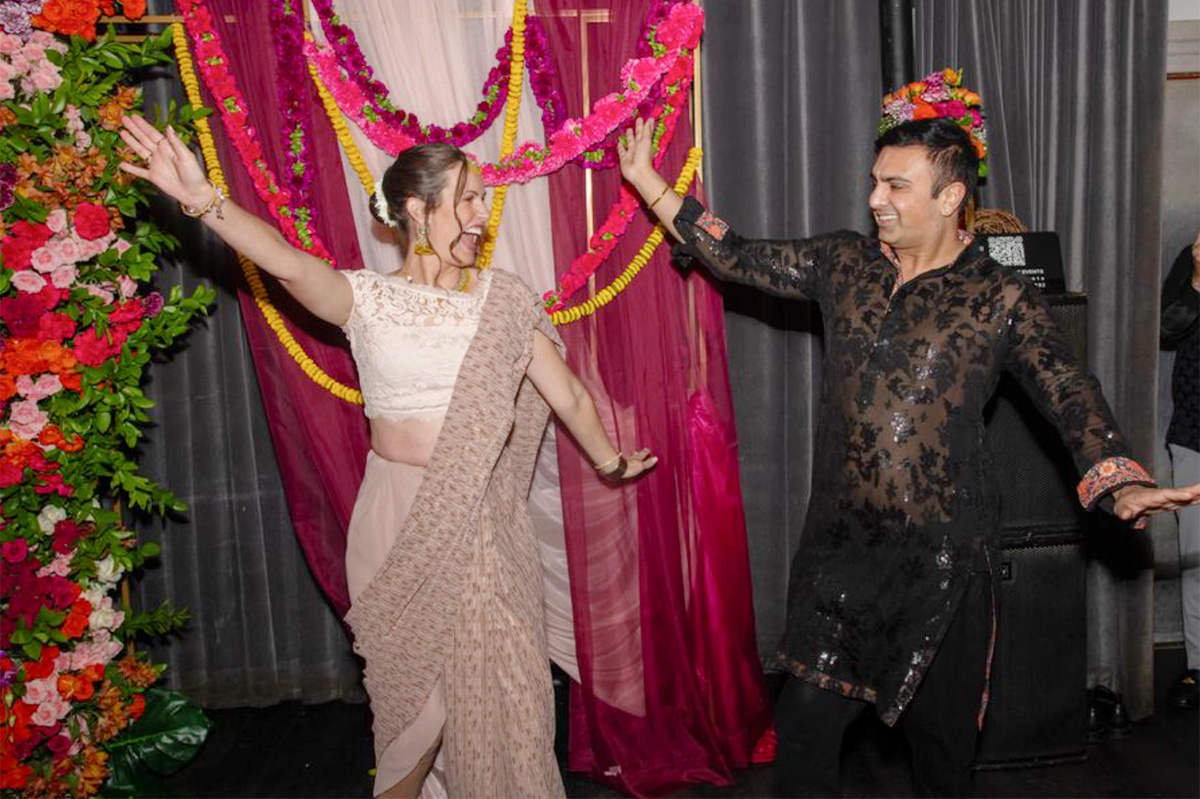
LGBTQ activist and businessman Joshua Patel hosted a community Diwali party on Nov. 9.
Patel organized the event as a community gathering amid the Trump-Vance administration’s policies against LGBTQ inclusion and DEI. The event, held at the Capo Deli speakeasy, drew more than 120 attendees, including local business leaders.
Patel is a franchise owner of ProMD Health, recently awarded as the best med spa by the Washington Blade. He is also a major gift officer at Lambda Legal.
Patel noted that upon moving from New York to Washington in 2022, he desired a chance for community-based Diwali celebrations. He stated that the city offered minimal chances for gatherings beyond religious institutions, unless one was invited to the White House’s Diwali party.
“With our current administration, that gathering too has ended — where we cannot expect more than Kash Patel and President Trump lighting a ‘diya’ candle on Instagram while simultaneously cutting DEIB funding,” Patel said.
In addition to celebrating the festival of lights and good over evil, Patel saw the event as a moment to showcase “rich, vibrant culture” and “express gratitude.”
Patel coined the celebration a “unifier.”
“From a spiritual angle, Shiva was the world’s first transgender God, taking the form of both “male” and “female” incarnations,” Patel said. “The symbolism of our faith and concepts are universal and allows for all to rejoice in the festivities as much or little as they desire.”
Savor Soiree, DMV Mini Snacks and Capo Deli catered the event. DJ Kush spun music and Elisaz Events decorated the Diwali celebration.
The Diwali party also featured performances by former Miss Maryland Heather Young Schleicher, actor Hariqbal Basi, Patel himself and Salatin Tavakoly and Haseeb Ahsan.
Maryland
Harford school board appeals state’s book ban decision to circuit court
5-2 ruling in response to ‘Flamer’ directive

By KRISTEN GRIFFITH | Marking a historic moment in Maryland’s debate over school library censorship, Harford County’s school board voted Thursday to appeal the state’s unprecedented decision overturning its ban of a young adult graphic novel, pushing the dispute into circuit court.
The 5-2 vote followed a recent ruling from the state board overturning Harford’s ban of the book “Flamer.” In a special meeting Thursday afternoon, board members weighed whether to seek reconsideration or take the matter to circuit court — ultimately opting to appeal.
The book “Flamer” is by Mike Curato, who wrote about his experience being bullied as a kid for being gay.
The rest of this article can be found on the Baltimore Banner’s website.
-

 Politics4 days ago
Politics4 days agoPro-trans candidates triumph despite millions in transphobic ads
-

 Opinions4 days ago
Opinions4 days agoDemocratic Socialism won’t win the whole country
-

 National4 days ago
National4 days agoUS bishops ban gender-affirming care at Catholic hospitals
-

 Maryland5 days ago
Maryland5 days agoSalisbury, Md. rainbow crosswalk removed on Veterans Day

